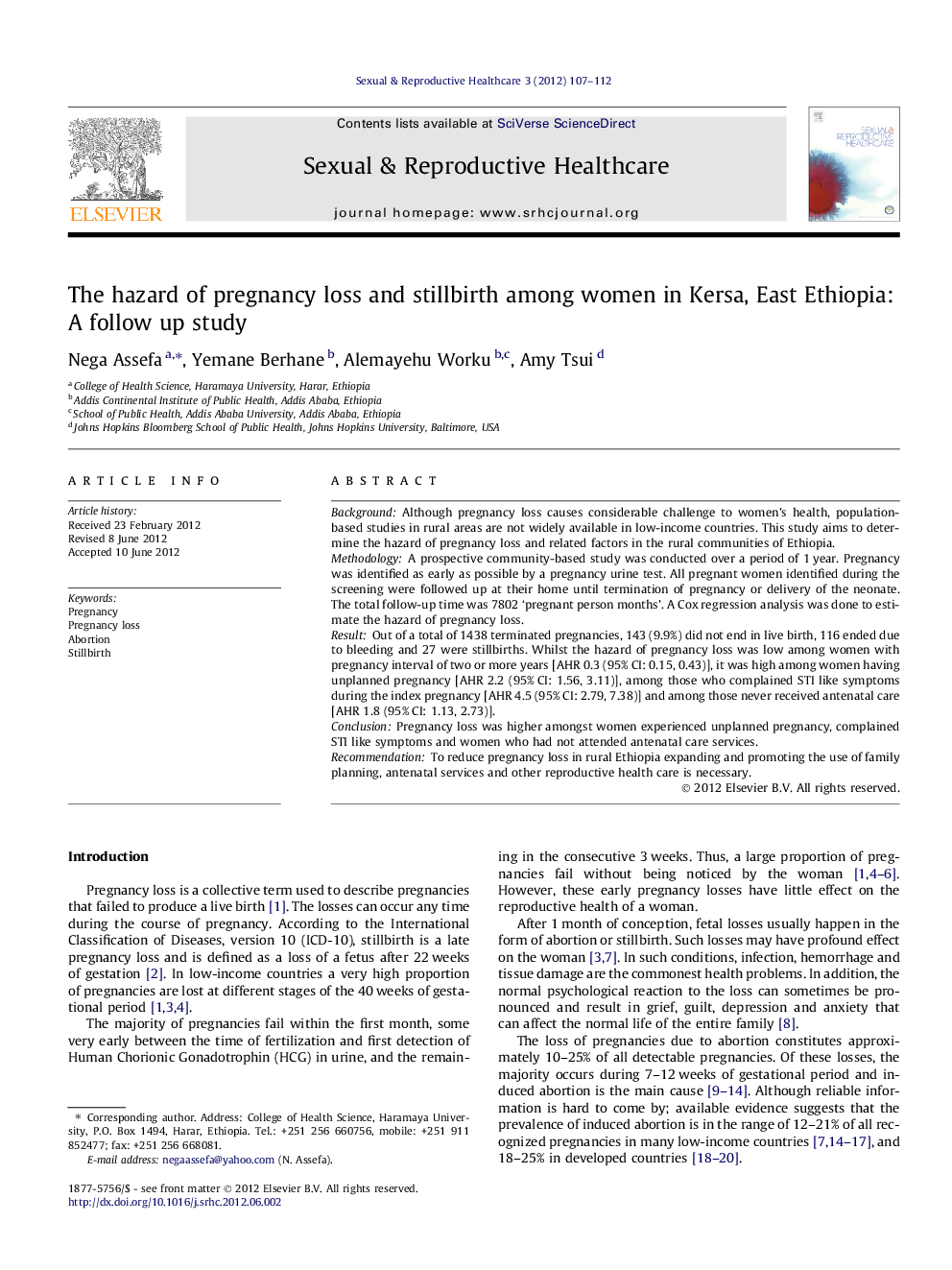| Article ID | Journal | Published Year | Pages | File Type |
|---|---|---|---|---|
| 2636032 | Sexual & Reproductive Healthcare | 2012 | 6 Pages |
BackgroundAlthough pregnancy loss causes considerable challenge to women’s health, population-based studies in rural areas are not widely available in low-income countries. This study aims to determine the hazard of pregnancy loss and related factors in the rural communities of Ethiopia.MethodologyA prospective community-based study was conducted over a period of 1 year. Pregnancy was identified as early as possible by a pregnancy urine test. All pregnant women identified during the screening were followed up at their home until termination of pregnancy or delivery of the neonate. The total follow-up time was 7802 ‘pregnant person months’. A Cox regression analysis was done to estimate the hazard of pregnancy loss.ResultOut of a total of 1438 terminated pregnancies, 143 (9.9%) did not end in live birth, 116 ended due to bleeding and 27 were stillbirths. Whilst the hazard of pregnancy loss was low among women with pregnancy interval of two or more years [AHR 0.3 (95% CI: 0.15, 0.43)], it was high among women having unplanned pregnancy [AHR 2.2 (95% CI: 1.56, 3.11)], among those who complained STI like symptoms during the index pregnancy [AHR 4.5 (95% CI: 2.79, 7.38)] and among those never received antenatal care [AHR 1.8 (95% CI: 1.13, 2.73)].ConclusionPregnancy loss was higher amongst women experienced unplanned pregnancy, complained STI like symptoms and women who had not attended antenatal care services.RecommendationTo reduce pregnancy loss in rural Ethiopia expanding and promoting the use of family planning, antenatal services and other reproductive health care is necessary.
